|
Monday 21st to Sunday
27th February 2022 |
| |
|
An open cluster of stars is defined as a
group of up to several thousand stars that were formed in the same molecular
cloud and are held together by each other's gravity. All the stars within a
cluster will be a similar age and they gradually drift apart over many
millions of years. |
| |
|
If you look fairly high up towards the south
east around midnight next week, it is possible to see the open cluster of
stars known as Melotte 111 with the naked eye. Firstly find the
constellation of Coma Berenices which is located between the constellations
of Bootes and Leo. The cluster will be situated slightly to the right of
Coma Berenices. |
| |
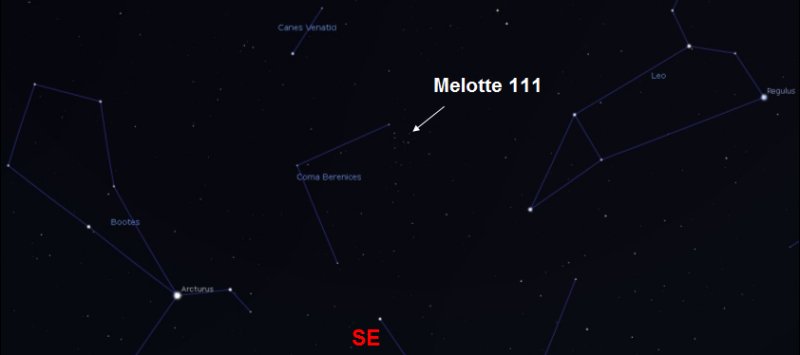 |
| |
|
Although the cluster had been known about for
a long time, Charles Messier never bothered to include it in his catalogue
of deep sky objects, so it doesn't have an "M" number. Back in 1915, a
British astronomer called Philibert Melotte included it in his list of star
clusters and it was number 111 that he recorded, hence the name. The
cluster contains around 40 brighter stars that are approximately 280 light
years away from us and the brightest of these form an obvious "V" shape. |
| |
|
On Thursday 24th around 9pm, the
constellation of Gemini reaches its highest position in the night sky
towards the south. There will be no light pollution from the Moon because
it will be below the horizon, so it's an ideal time to spot an open cluster
that Charles Messier did bother to catalogue! The cluster is known as M35
and it is much fainter, so you will need to use binoculars or a small
telescope. This cluster is a lot further away from us - around 3,800 light
years. It is located near the foot of one of the Gemini twins. |
| |
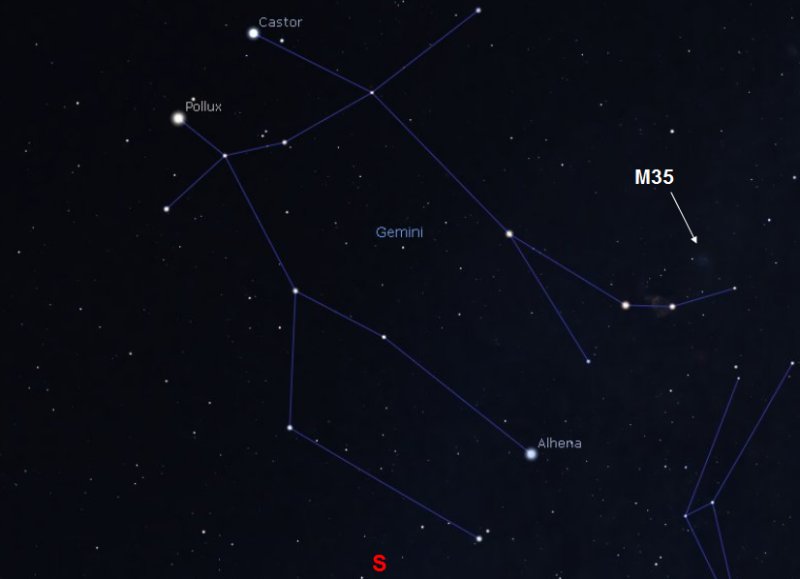 |
|
Monday 14th to Sunday
20th February 2022 |
| |
|
On the morning of Wednesday 16th, planet
Mercury reaches its greatest western elongation from the Sun. What on Earth
does that mean? In practical terms, Mercury appears the furthest it ever
gets away from the Sun and can be viewed popping up over the south east
horizon a hour before sunrise. |
| |
|
If you look towards the south east around
6.30am you will see Venus shining brightly, with Mars a little below it and
Mercury to the left of Mars very close to the horizon. |
| |
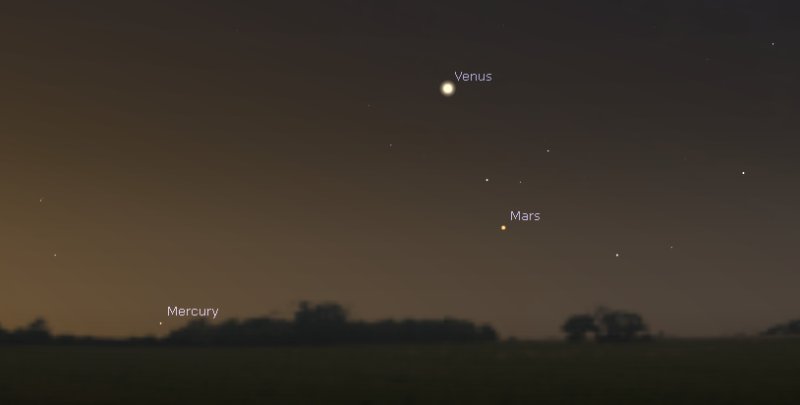 |
| |
|
Please don't be tempted to use binoculars or
a telescope to obtain a better view as if you accidentally catch a glimpse
of the Sun in the eyepiece, it will cause instant and permanent blindness. |
| |
|
The evening of 16th sees a Full Moon rising
in the east after dark and for the following few evenings, a bright Gibbous
Moon. You might think that it's ideal time to aim your telescope that way,
but in reality the amount of sunlight being reflected from the lunar surface
washes-out many of the interesting lunar features. |
| |
|
If astronomers are looking at such a bright
Moon, they normally use a special filter in their eyepiece to lose most of
light that their telescope has collected! This is called a Neutral Density
filter and it prevents your eyes from being temporarily burnt - the same as
if you have accidentally stared at a light bulb - afterwards there is a
black spot in your vision for a while. Please don't try it! |
| |
|
To safely observe the Sun, astronomers use a
totally different type of filter that is far more complex and expensive than
the Neutral Density ones. |
|
Monday 7th to Sunday
13th February 2022 |
| |
|
On Monday evening, 7th February, there will
be a 43%-lit crescent Moon with the planet Uranus just above it. If you are
outside around 7pm, the pair will be located towards the south west. |
| |
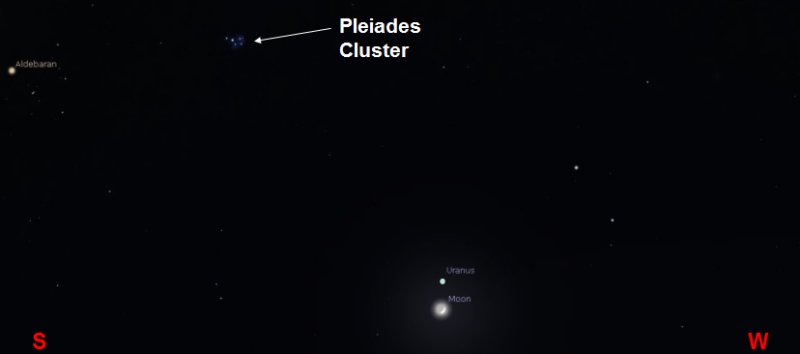 |
| |
|
The Moon will be easy to spot, but Uranus
currently has a magnitude of +5.8 so it is right on the limit of what could
theoretically be seen with the naked eye if you were in a very dark
sky location. Bearing in mind that many observers will be in town with
street lights and the Moon will be creating some light pollution of its own
- a telescope will be required. An aperture of at least 150mm is
recommended, but what does that mean? |
| |
|
In layman's terms, it refers to the diameter
of the hole in the front of the telescope and therefore the size of its lens
or mirror. The main job of an astronomical telescope is to collect as much
light as possible from faint objects, so the bigger the hole, the more light
it can collect! |
| |
|
Once the light has been collected, then an
eyepiece is chosen to provide the desired magnification, but the more
something is magnified, the dimmer it gets and often, lower magnifications
are better. A magnification of 200x is required to be able to see Uranus as
a disc rather than just a blob with a greenish hue! |
| |
|
The following evening, Tuesday 8th, gives you
an opportunity to observe the clair-obscur effects known as the Lunar X and
V. The Moon will be located towards the south just as it gets dark around
6pm and at that time, the terminator where sunlight hits the lunar surface,
will illuminate the effects. |
|
Monday 31st
January to Sunday 6th February 2022 |
| |
|
Tuesday 1st is a New Moon, so you could go
outside the following evening and try to spot what will be a thin 3%-lit
crescent. At the same time, planet Jupiter will be just above it. Look
towards the south west around 5.30pm and you will be able to catch them just
before they set below the horizon. |
| |
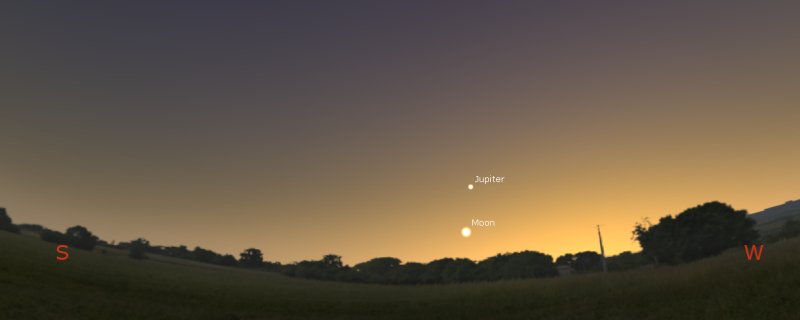 |
| |
|
The Moon and larger planets appear bright
because they are reflecting light from our Sun and in astronomical terms,
the distances involved are very small. Stars are always fainter because
they are generating their own light and it is having to travel a long way to
reach us. You can easily see Jupiter and the Moon, but as it won't be
properly dark at that time, you won't see anything else! |
| |
|
As the Moon orbits around us, it has a slight
rocking motion; or if you like, it wobbles a bit. The technical term for
this is "libration". It means that sometimes you can see a little further
around the sides of the Moon that are normally facing away from us. |
| |
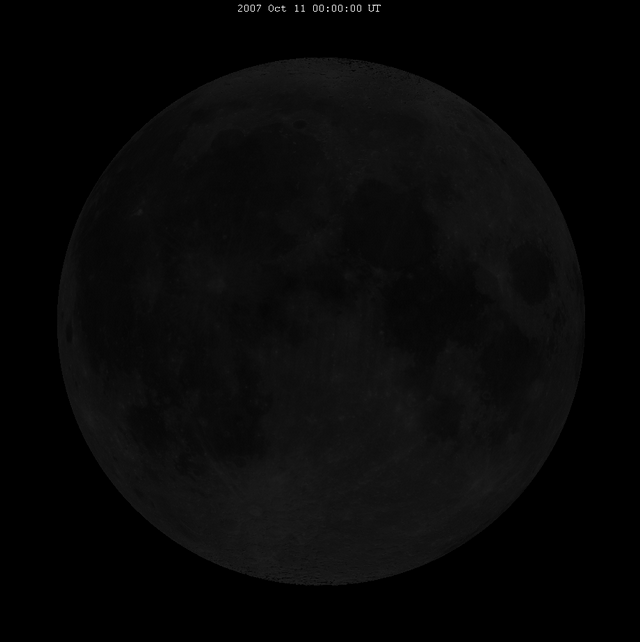 |
| |
|
Animation courtesy of Wikipedia |
| |
|
On Sunday 6th, there is an opportunity to
observe what are known as the "libration Seas" on the eastern edge of the
lunar surface - Mare Smythii and Mare Marginis. Just after dark, the Moon
will be located towards the south and it will still be appearing as a
crescent shape as we had the New Moon only a few days before. The easiest
way to spot them is to first locate the Mare Crisium that is slightly
further around the nearside. |
| |
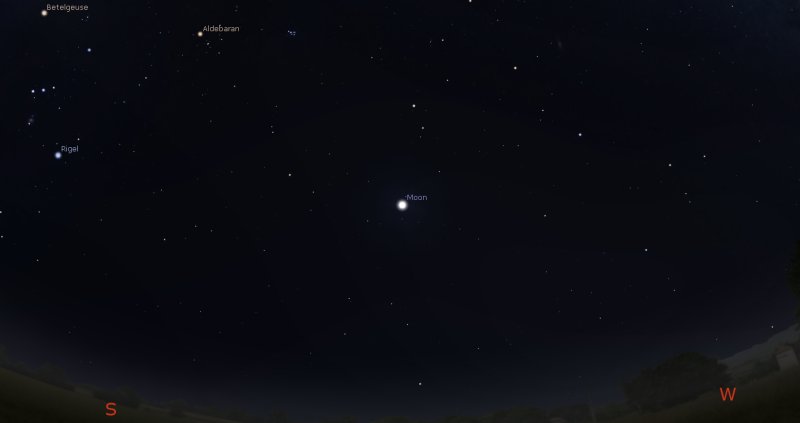 |
| |
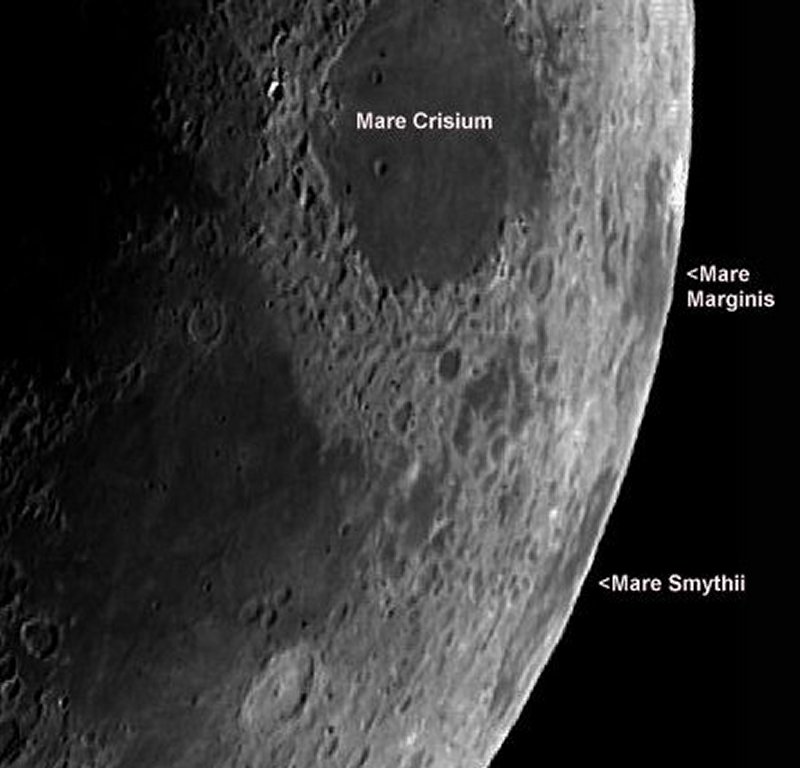 |
| |
|
While you are looking at the Moon that
evening, the Pleiades open cluster of stars will be above it and slightly to
the left, with the constellation of Orion further left. |







